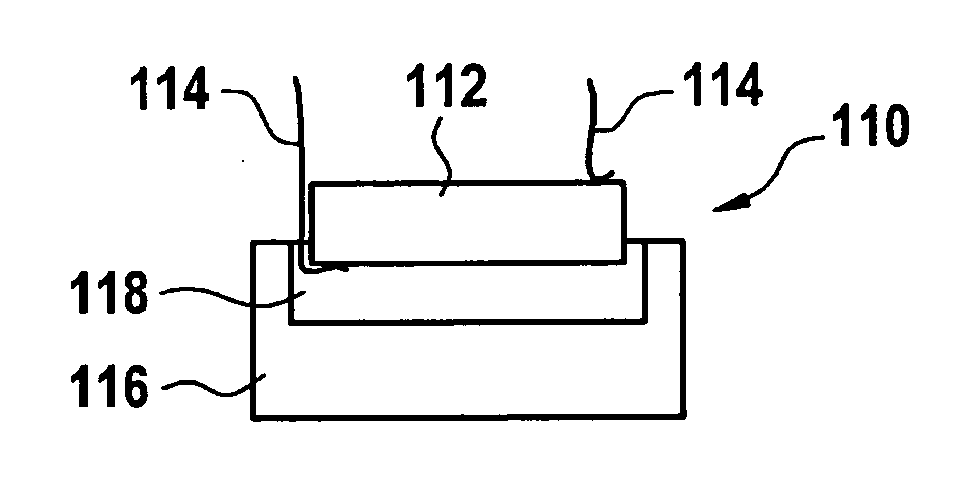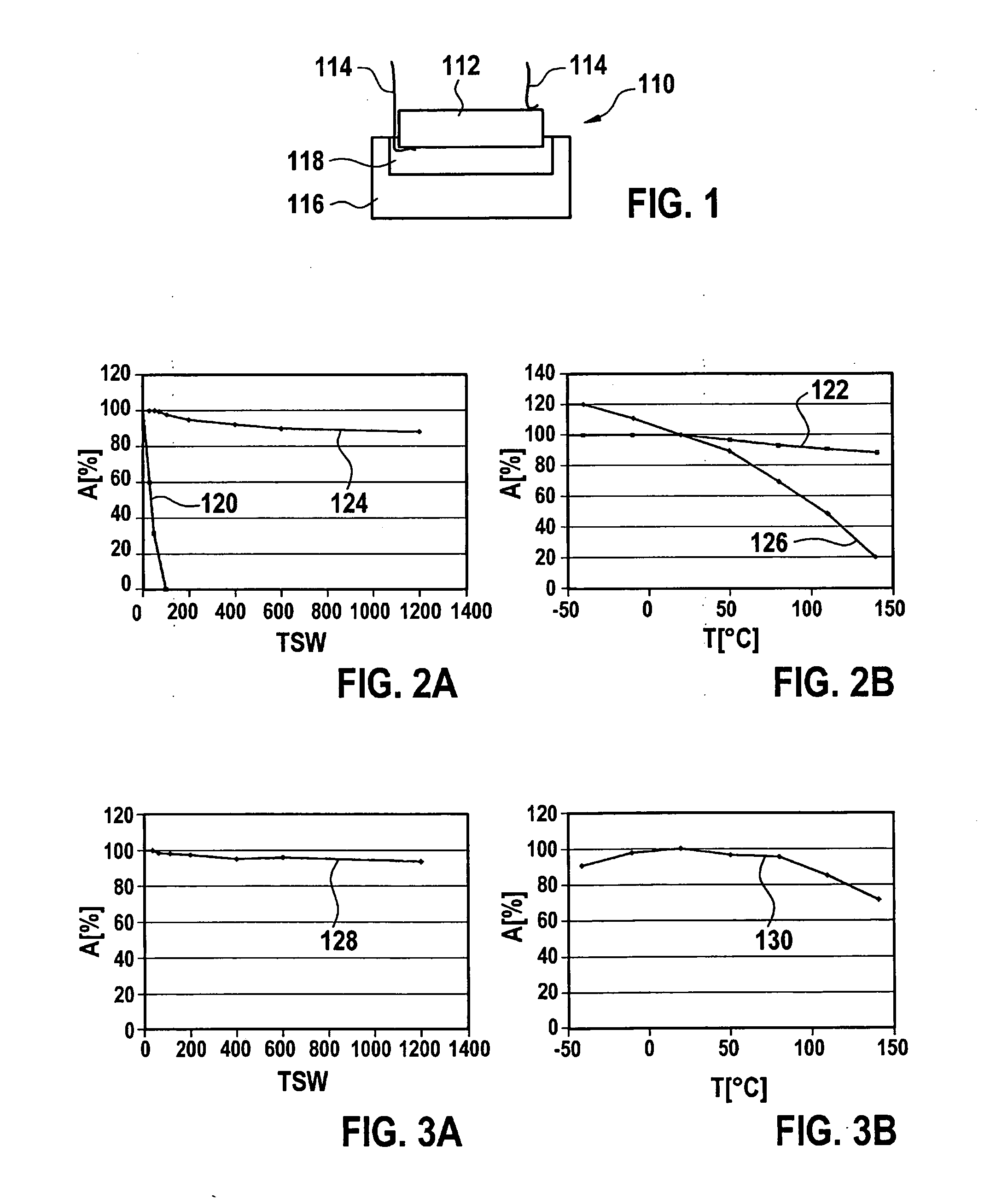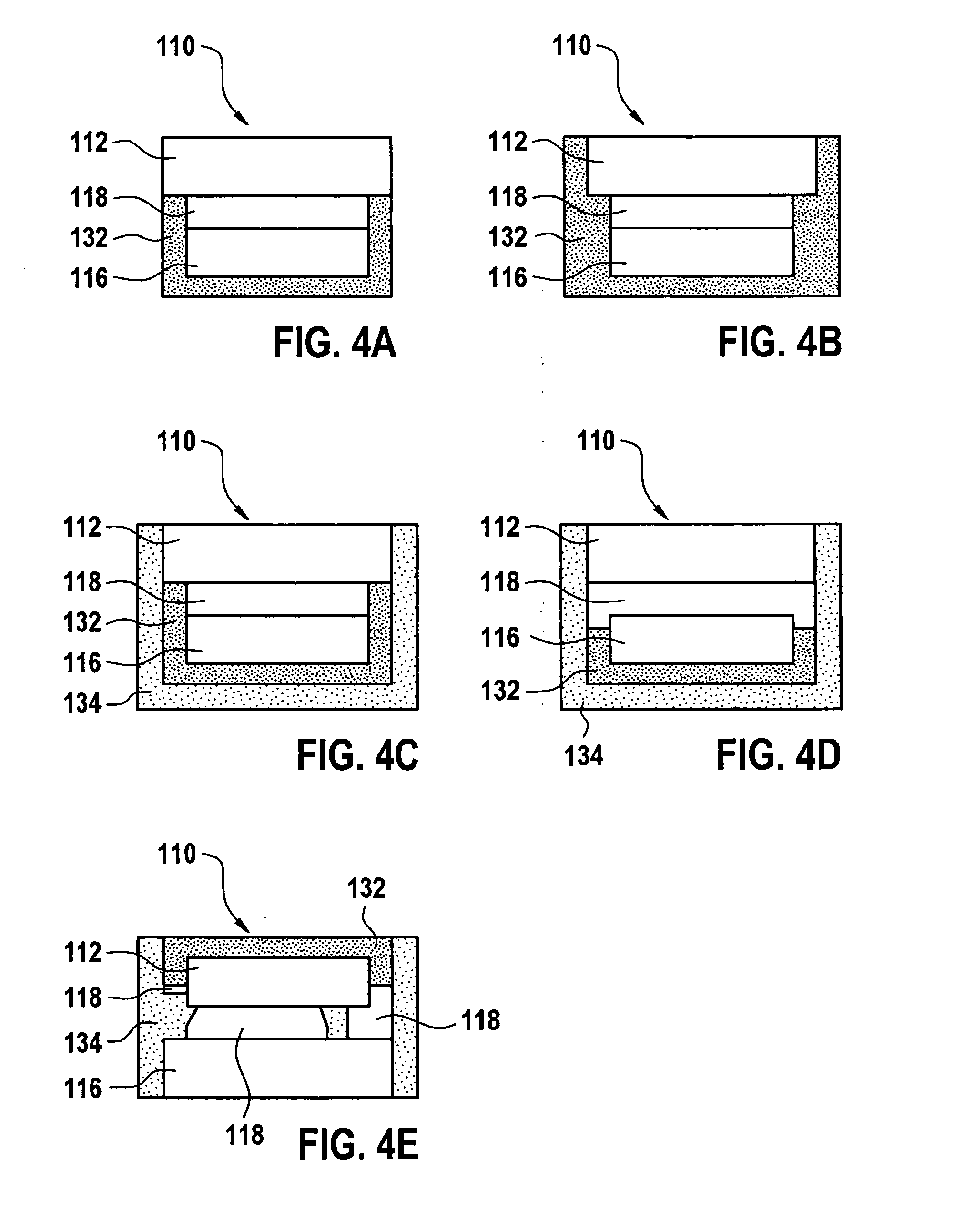Ultrasonic transducer for use in a fluid medium
- Summary
- Abstract
- Description
- Claims
- Application Information
AI Technical Summary
Benefits of technology
Problems solved by technology
Method used
Image
Examples
Embodiment Construction
[0031]FIG. 1 shows a first exemplary embodiment of an ultrasonic transducer 110 according to the present invention in a sectional view from the side. Ultrasonic transducer 110 has a piezoelectric transducer element 112 that can be formed for example as a cylindrical piezoelement. This piezoelectric transducer element 112 can for example be electrically contacted via two terminal contacts 114, for example contact wires, so that piezoelectric transducer element 112 can for example be provided with control signals via these terminal contacts 114, and / or so that signals of the piezoelectric transducer element 112 can be led away via terminal contacts 114.
[0032]In addition, in the embodiment shown in FIG. 1 ultrasonic transducer 110 has a matching body 116. This matching body 116 is used to improve the vibrational coupling between piezoelectric transducer element 112 and a fluid medium into which ultrasonic signals are to be coupled and / or from which ultrasonic signals are to be coupled ...
PUM
| Property | Measurement | Unit |
|---|---|---|
| Thickness | aaaaa | aaaaa |
| Temperature coefficient of resistance | aaaaa | aaaaa |
| Hardening | aaaaa | aaaaa |
Abstract
Description
Claims
Application Information
 Login to View More
Login to View More - R&D
- Intellectual Property
- Life Sciences
- Materials
- Tech Scout
- Unparalleled Data Quality
- Higher Quality Content
- 60% Fewer Hallucinations
Browse by: Latest US Patents, China's latest patents, Technical Efficacy Thesaurus, Application Domain, Technology Topic, Popular Technical Reports.
© 2025 PatSnap. All rights reserved.Legal|Privacy policy|Modern Slavery Act Transparency Statement|Sitemap|About US| Contact US: help@patsnap.com



